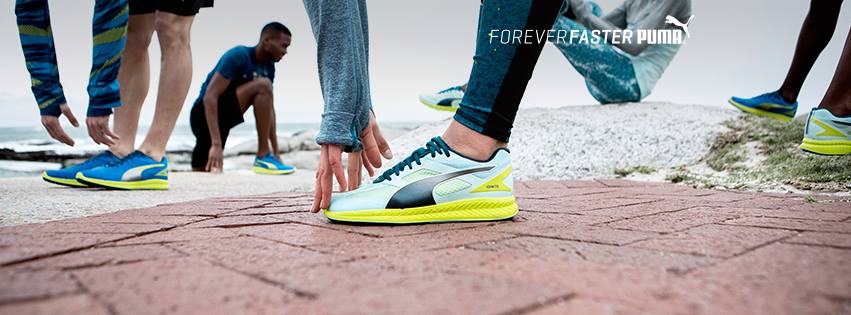PUMA
Sportswear giant PUMA has been finetuning its sustainability approach for many years. In 2002, PUMA published its first Sustainability Report and launched several projects to pimp the durability of their products.
Packaging
Packaging was one of the first things to go green. PUMA approached Fuseproject to improve the way they pack and send their shoes and clothes. The idea was to reduce PUMA’s ecological footprint and to cut costs.
Together they created the Clever Little Bag. The net result: approximately 20 million Megajoules of electricity saved, 1 million liters of water conserved, 500.000 liters of diesel saved during transportation (due to the bag’s lighter weight) and lastly, 8.500 tons less paper consumed. To top it all off, the bag can be reused by the consumer and is 100% recyclable.
Bring Me Back Program
PUMA runs its ‘Bring Me Back Program’ in cooperation with recycling company I:CO. Both companies aim at encouraging consumers to recycle and reuse sports products by providing a convenient process:
consumers can bring used shoes, clothes and accessories to the ‘Bring Me Back’ bins in any PUMA store. These products are then reused or recycled. During the recycling process, they are broken down into fibers and reused to create raw materials from which, in turn, new products will be made.
PUMA S-Index
PUMA uses the PUMA S-Index as an internal benchmark for the development and manufacturing of sustainable products. The index determines how much sustainable material a product needs to contain to be classified as ‘sustainable’. It also includes standards on social and working conditions in the factories.
-
Organic Cotton
PUMA works closely together with organic cotton organizations and the main suppliers to increase the use of sustainably grown cotton. In 2013, Textile Exchange -- a company specializing in organic cotton -- labelled PUMA the third largest consumer of organic cotton in the world. -
Recycled Cotton
In 2013, and in close collaboration with its suppliers Shenzhou / Yagi, PUMA created a 30% post-industrial recycled cotton fiber. The recycled textile comes from cutting waste that would otherwise have ended up on a landfill. So PUMA uses its own waste cotton, thereby reducing their use of new cotton as well as the negative impact of the cotton industry in terms of water and CO2. -
Recycled Polyester
PUMA makes a point of using recycled polyester, which is made from previously used polyester, often from plastic bottles. PUMA is always on the look-out for better and more commercial solutions to extend the use of this infinitely recyclable material. -
bluesign® Approved Materials
Since a couple of years, PUMA has been using as many bluesign® approved materials as possible. bluesign® is a Swiss company that came up with a technique to classify materials based on the amount of chemical substance they contain. bluesign® also audits the factories where these fabrics are produced, and once the factory and the fabric live up to the bluesign® standards, the fabric will get bluesign® certification. The partnership agreement between bluesign® and PUMA dates from 2014.
PUMA’s sustainability initiatives are part of a larger strategy by parent company Kering. Kering encourages its brands to look for sustainable solutions throughout the chain.
